Indus Valley-3
Modern Pakistan (Which was a part of India until 1947)
When last we left the Indus Valley, Arians from the Central Asian Plains had invaded the Valley and then expanded out into the rest of India. They had also melded their religious belief's with local belief's to form the Hindu religion.
Later, the Arian's learned to write, however some Brahmins considered it a sacrilege to change from communicating their beliefs orally, to putting them in written form. But a sufficient number of Brahmins supported this innovation, and they began to put traditional Arian stories into writing. These writings became known as the Vedas - Veda meaning wisdom. These Vedas became wisdom literature, a literature that would be considered as an infallible source of timeless, revealed truth. The most important of the Vedas was the Rig Veda, which consisted of hymns or devotional incantations written in ten books.
In the far northeast, Brahmins performed as teachers and gave instruction to local original inhabitant elites, who had not been completely Hindunized. These elites were accustomed to deference from local people, and they were offended by the posturing, pride and arrogance of the Brahmins. They resisted the claims of the Brahmins to higher rank and superior knowledge. Some among them opposed the bloodletting of Hinduism's animal sacrifices. Some of them also thought the Brahmins to be too involved in ceremonial formalities and ritual, and saw the Brahmin's view of gods and salvation as strange.
With this dissent against orthodox Hinduism, a variety of men with vision appeared, they tried to fill the void left unfulfilled by Hinduism. These new sect leaders denied the authority of the Vedas, and each developed a code of conduct and a way of living and thinking, that would hopefully lead to enlightenment and fulfillment.
 |  |  |
The Jains
This movement was supported by original inhabitants of wealth and influence, who gave their support to one or another of these religious visionary's in their area. These new Sect leaders wandered across the northeast, sometimes with large bands of followers. They entered communities to engage in disputations with rival sects and orthodox Brahmins, these disputations were welcomed entertainment for local people, unused to thoughts and concepts from the outside world.
The most successful of the new sects were those that attempted to provide relief from orthodox Hinduism's failure to alleviate human suffering. One such sect was the Jains - from the Sanskrit verb ji, meaning to conquer. The Jains sought relief from suffering, by conquest over one's own passions and senses. This conquest they believed, gave one purity of soul.
According to legend, the Jains were led by Nataputta Vardhamana, the son of a royal governor from the Magadha region, "Nataputta Vardhamana" gave up his princely status for a life of asceticism, and he became known as Mahavira (Great Souled One). Legend describes Mahavira's beginnings as a reformer - as not seeking to overthrow the Hindu caste system or the worship of Hindu gods, but wishing to do something about the misery that he saw all around him. Legend describes him as having sympathy, not only for people, but also for the animals that the Brahmins sacrificed.
Jain lay persons took the following vows: never to intentionally destroy a living thing, never to speak falsehoods, never to steal, to always be faithful in marriage, to always be chaste outside of marriage, to possess no more money or other things than one had set for oneself as sufficient, (a practical restriction that varied with how wealthy one was), to travel no farther than the limits that one had set for oneself, to think no evil thoughts about others, to sit in meditation as often as one had planned, to spend time as a temporary monk or nun, and to support the nuns and monks with contributions.
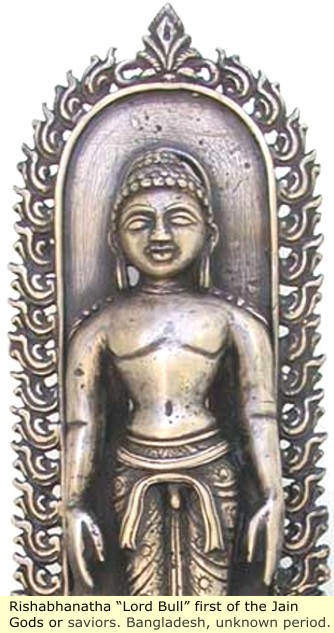 |  |  |
Click here for detail of the Jain Religion <<Click>>
The Buddhist
Another, who led a religious movement to relieve suffering, was a prince named "Siddhartha Gautama", later to be known as the "Buddha" (Great Teacher). Siddhartha was born into the Sakya tribe at the foot of the Himalayan Mountains, just north of the Ganges Valley. Siddhartha lived in a small city named "Kapilavastu" (in what is now southern Nepal). He is reported to have seen his native city over-run and its people butchered by the Arians. The Sakya tribe was under Arian suzerainty, but had retained it's independence in exchange for a tribute paid to Arian overlords. The Sakya tribe had aristocrats and commoners, and according to legend, Siddhartha was a prince.
According to legend, in his youth, Siddhartha had been sheltered from the ugliness and poverty all around him. But when he was twenty nine - around 534 B.C. - he decided to become a wanderer. Apparently Siddhartha withdrew from a world, that he saw as inhospitable to conquered royalty such as he. Though he was disturbed by the Arian's, he was also fascinated by the Arian people who had destroyed his state and its traditions. The legend created by his followers, describes Siddhartha as having become a wanderer, in order to learn about human existence. He became an ascetic and abused his body by hardly eating. After accepting failure, in his quest to gain understanding of human existence, Siddhartha began eating better, and he began devising what he believed were better solutions to human misery.
 | 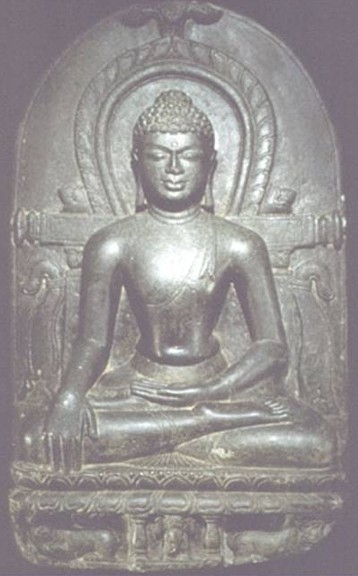 |  |
Siddhartha agreed with the view expressed in the Upanishads, that the cause of human misery was humanity itself. But he was determined not to fall into what he saw as the error of those who sought salvation in philosophical speculations. He refused to question or discuss whether the cosmos is finite or infinite, or whether there is life after death or other such metaphysical questions. He refused to consider these questions, on the grounds that these questions, sidetrack people from doing something practical about the misery of their existence.
 |  |  |
According to legend, Siddhartha became a master of the tenets and practices of other sects, and that many of his disciples were recruited after hearing him debate with religious rivals in town gatherings. Siddhartha preached no warnings of torments for evil deeds, instead he preached the attaining of serenity or nirvana, through self-discipline.
 |  |  |
Politically, India followed man's normal course of kingdoms rising and falling, with almost constant warfare. However, there was one kingdom of particular note, it is the kingdom founded by Mahapadma Nanda. The Nandas are universally described as being of low origin, {code for Sudras}, they are of particular note because:
The northwestern part of India, suffered a campaign by Alexander the Great in 327 B.C, he was pursuing his campaign to conquer the extremities of the defeated Achaemenian Empire. Having entered Gandhara, he campaigned successfully across the Punjab as far as the Beas River. Here his troops refused to continue fighting, because they had encountered the army of the Nandas. Some historians suggest that Alexander's Greek soldiers, may have mutinied out of fear of this army.
| |
The Kshatriya (Warrior Class)In Hindu India, the second-highest of the four varnas, or social classes, traditionally the military or ruling class. In ancient times before the caste system was completely defined, they were considered first in rank, placed higher than the Brahmans, or priestly class. The legend that they were degraded by an incarnation of Vishnu as a punishment for their tyranny may reflect a historical struggle for supremacy between priests and rulers. In modern times the Kshatriya varna includes members from a variety of castes, united by their status in government or the military or their land ownership. |
The Laws of War
When society became organized and a warrior caste (Kshatriya) came into being, it was felt that the members of this caste should be governed by certain humane laws, the observance of which, it was believed, would take them to heaven, while their non-observance would lead them into hell. In the post Vedic epoch, and especially before the epics were reduced to writing, lawless war had been supplanted, and a code had begun to govern the waging of wars. The ancient law-givers, the reputed authors of the Dharmasutras and the Dharmasastras, codified the then existing customs and usages for the betterment of mankind. Thus the law books and the epics contain special sections on royal duties and the duties of common warriors.It is a general rule that kings were chosen from among the Kshatriya caste. In other words, a non-Ksatriya was not qualified to be a king. And this is probably due to the fact that the kshatriya caste was considered superior to others in virtue of its material prowess. Though the warrior's code enjoins that all the Ksatriyas should die on the field of battle, still in practice many died a peaceful death. There is a definite ordinance of the ancient law books prohibiting the warrior caste from taking to asceticism.
Action and renunciation is the watch-word of the Ksatriya. The warrior was not generally allowed to don the robes of an ascetic. But Mahavira and Gautama protested against these injunctions and inaugurated an order of monks or sannyasins. When these dissenting sects gathered in strength and numbers, the decline of Ksatriya valor set in. Once they were initiated into a life of peace and prayer, they preferred it to the horrors of war. this was a disservice that dissenting sects did to the cause of ancient India.
When a conqueror felt that he was in a position to invade the foreigner's country, he sent an ambassador with the message: 'Fight or submit.'
More than 5000 years ago India recognized that the person of the ambassador was inviolable. This was a great service that ancient Hinduism rendered to the cause of international law. It was the religious force that invested the person of the herald or ambassador with an inviolable sanctity in the ancient world. The Mahabharata rules that the king who killed an envoy would sink into hell with all his ministers.
Megasthenes was a Greek ethnographer in the Hellenistic period, author of the work Indica. He was born in Anatolia (modern Turkey) and became an ambassador of Seleucus I of Syria to the court of Sandrocottus, who possibly is Chandragupta Maurya in Pataliputra, India. However the exact date of his embassy is uncertain. Scholars place it before 288 B.C.
Megasthenes noticed a peculiar trait of Indian warfare.
"Whereas among other nations it is usual, in the contests of war, to ravage the soil and thus to reduce it to an uncultivated waste, among the Indians, on the contrary, by whom husbandmen are regarded as a class that is sacred and inviolable, the tillers of the soil, even when battle is raging in their neighborhood, are undisturbed by any sense of danger, for the combatants on either side in waging the conflict make carnage of each other, but allow those engaged in husbandry to remain quite unmolested. Besides, they never ravage an enemy's land with fire, nor cut down its trees."
The modern "scorched earth" policy was then unknown. "
Professor H. H. Wilson says:
"The Hindu laws of war are very chivalrous and humane, and prohibit the slaying of the unarmed, of women, of the old, and of the conquered."
At the very time when a battle was going on, be says, the neighboring cultivators might be seen quietly pursuing their work, - " perhaps ploughing, gathering for crops, pruning the trees, or reaping the harvest." Chinese pilgrim to Nalanda University, Hiuen Tsiang affirms that although the there were enough of rivalries and wars in the 7th century A.D. the country at large was little injured by them.
Maurya Empire
Maurya Empire |
The Nanda Dynasty was overthrown in 322 B.C. by Chandragupta Mauryaby who founded The Maurya Empire, and rapidly expanded his power westwards across central and western India taking advantage of the disruptions of local powers in the wake of the withdrawal westward by Alexander the Great's Greek and Persian armies. By 320 B.C. the empire had fully occupied Northwestern India, defeating and conquering the satraps left by Alexander.




 | 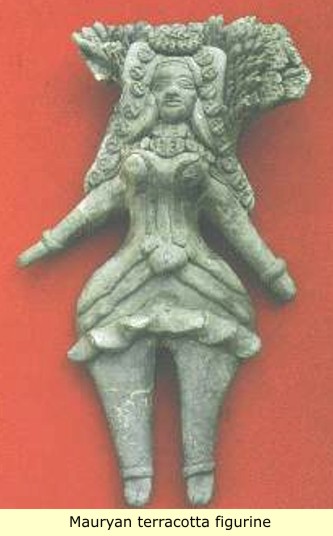 |  |
Under Chandragupta, the Mauryan Empire conquered the trans-Indus region, which was under Macedonian rule. Chandragupta then defeated the invasion led by Seleucus I, a Greek general from Alexander's army. Under Chandragupta and his successors, both internal and external trade, and agriculture and economic activities, all thrived and expanded across India thanks to the creation of a single and efficient system of finance, administration and security. After the Kalinga War, the Empire experienced half a century of peace and security under Ashoka: India was a prosperous and stable empire of great economic power whose trade extended across Western and Central Asia and Europe. Mauryan India also enjoyed an era of social harmony, religious transformation, and expansion of the sciences and of knowledge. Chandragupta Maurya's embrace of Jainism increased social and religious renewal and reform across his society, while Ashoka's embrace of Buddhism was the foundation of the reign of social and political peace and non-violence across all of India. Ashoka sponsored the spreading of Buddhist ideals into Sri Lanka, Southeast Asia, West Asia and Mediterranean Europe. The Maurya Empire dissolved in 185 B.C. with the foundation of the Sunga Dynasty in Magadha.
 |  |
Ancient Indian Cave Architecture: Click here >>> |
The Gupta Empire
Gupta Empire |
The Gupta Empire existed from approximately from 320 to 550 A.D. and covered much of the Indian Subcontinent. It was founded by Maharaja Sri-Gupta, the dynasty was the model of a classical Indian civilization. The peace and prosperity created under leadership of Guptas enabled the pursuit of scientific and artistic endeavors. This period is called the Golden Age of India and was marked by extensive inventions and discoveries in science, technology, engineering, art, dialectic, literature, logic, mathematics, astronomy, religion and philosophy that crystallized the elements of what is generally known as Hindu culture. Chandragupta I, Samudragupta, and Chandragupta II were the most notable rulers of the Gupta dynastys.
 |  |
The high points of this cultural creativity are magnificent architecture, sculptures and paintings. The Gupta period produced scholars such as Kalidasa, Aryabhata, Varahamihira, Vishnu Sharma and Vatsyayana who made great advancements in many academic fields. Science and political administration reached new heights during the Gupta era. Strong trade ties also made the region an important cultural center and set the region up as a base that would influence nearby kingdoms and regions in Burma, Sri Lanka, Malay Archipelago and Indochina.
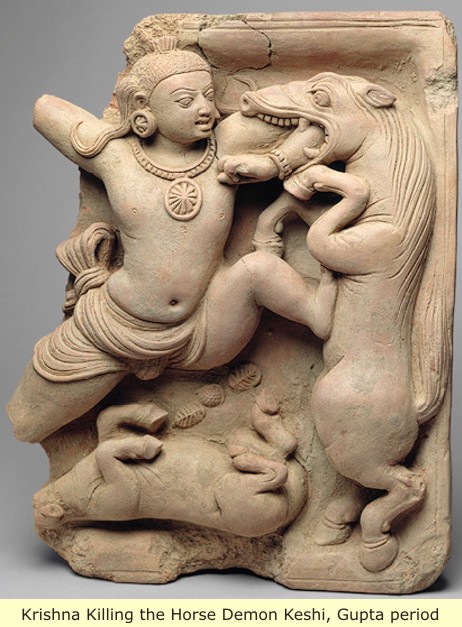 |  |
The earliest available Puranas are also thought to have been written around this period. The empire gradually declined because of many factors like the substantial loss of territory and imperial authority caused by their own erstwhile feudatories and the invasion by the Hunas (White Huns - Turks), from Central Asia. After the collapse of the Gupta Empire in the 6th century, India was again ruled by numerous regional kingdoms. A minor line of the Gupta clan continued to rule Magadha after the disintegration of the empire. These Guptas were ultimately ousted by the Vardhana ruler Harsha, who established an empire in the first half of the 7th century.
 |
Foreign invasions continued however, and at one time or another, India was invaded by almost all of the known powers. These included - Scythians, Parthians, Greeks, Romans, Persians, Mongols, Turks and Arabs. It was with the Arabs that Islam was brought to India. Each invader in their turn, left their mark. In the 1700s A.D, reasonable stability and unification, was achieved with British rule.
 |
 |
 |
 |
 |
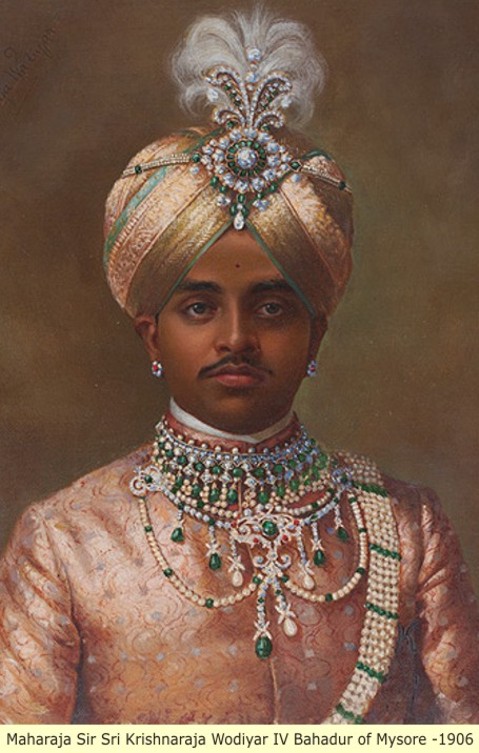 | 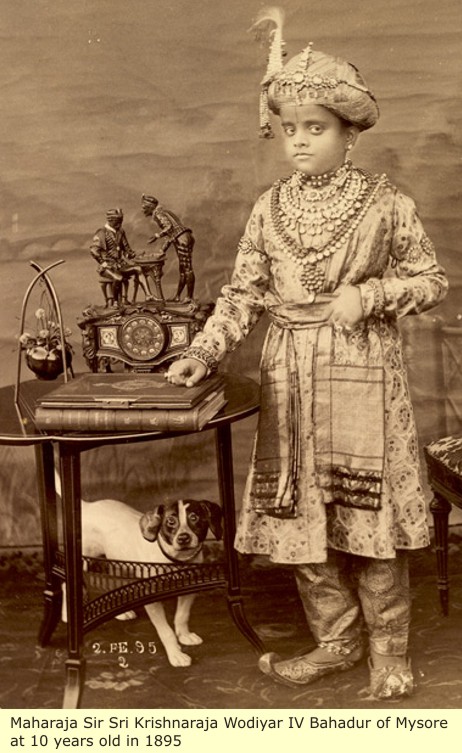 |

No comments:
Post a Comment